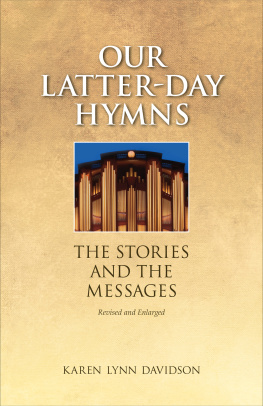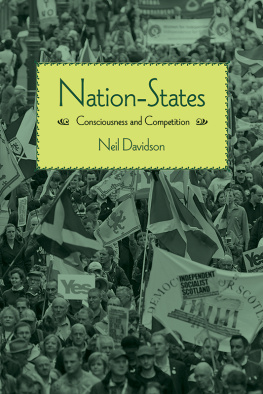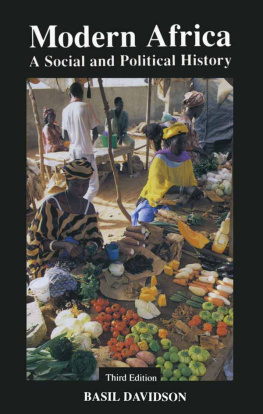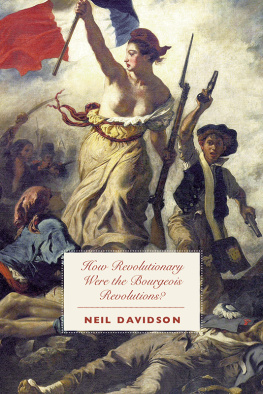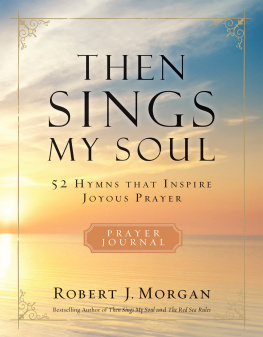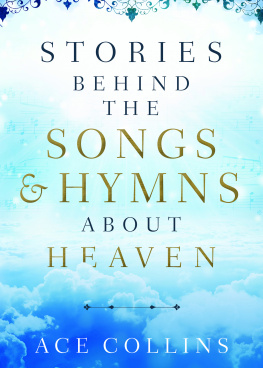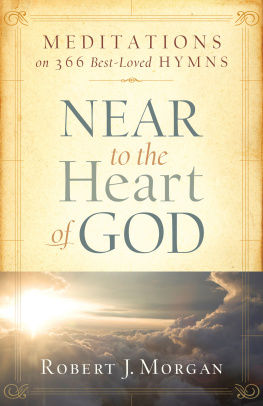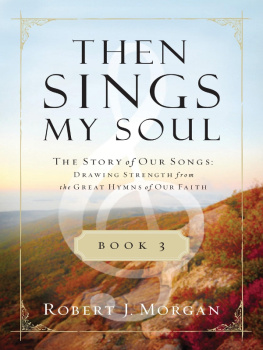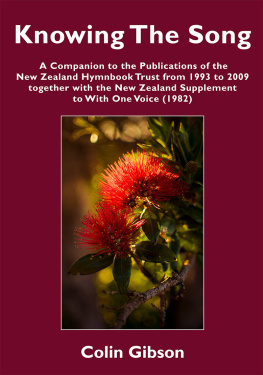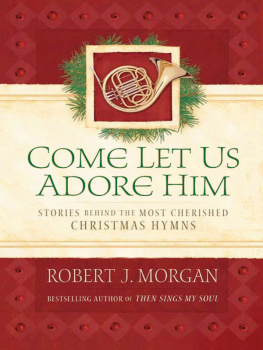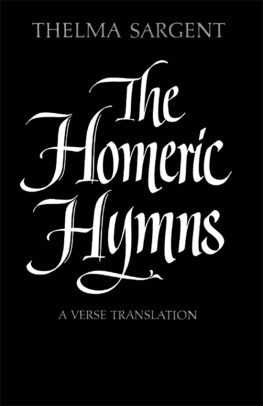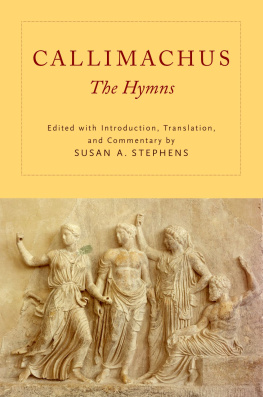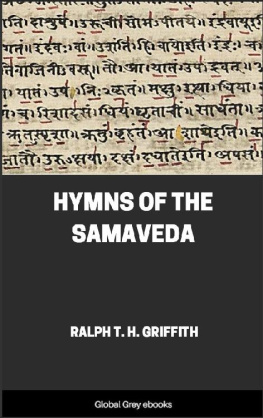Our Latter-day Hymns
The Stories and the Messages
Karen Lynn Davidson
2009 Karen Lynn Davidson .
All rights reserved. No part of this book may be reproduced in any form or by any means without permission in writing from the publisher, Deseret Book Company, P.O. Box 30178, Salt Lake City Utah 30178. This work is not an official publication of The Church of Jesus Christ of Latter-day Saints. The views expressed herein are the responsibility of the author and do not necessarily represent the position of the Church or of Deseret Book. Deseret Book is a registered trademark of Deseret Book Company.
Visit us at DeseretBook.com
Library of Congress Cataloging-in-Publication Data
Davidson, Karen Lynn.
Our Latter-Day hymns : the stories and the messages / Karen Lynn Davidson. Rev. ed.
p. cm.
Includes bibliographical references and index.
ISBN 978-1-60641-068-4 (paperbound)
1. Hymns of The Church of Jesus Christ of Latter-day Saints, 1985. 2. Hymns, EnglishHistory and criticism. 3. Church of Jesus Christ of Latter-day SaintsHymns. 4. Mormon ChurchHymns. I. Title.
BV420.H953D38 2009
264.09332023dc22
2008051080
R.R. Donnelley, Crawfordsville, IN
10 9 8 7 6 5 4 3 2 1
PREFACE TO THE REVISED EDITION
The decades that followed the publication of the 1985 hymnal have been exciting ones for Latter- day Saint hymnody. As the Church has spread worldwide, so has the hymnbook; in fact, the green volume so familiar to English-speaking Saints now has twenty-four foreign-speaking siblings, with work continuing on additional hymnals. It is wonderful to realize that most of the worlds Church members now have hymnals in their own language, with excellent translations of the texts provided by native speakers. And anyone, anywhere in the world, who has access to a computer can go to the Church music website (music.lds.org) to hear and learn the melody to any of our hymns.
New research has provided additional information about some of the hymns, their authors, and their composers. This revised edition of Our Latter- day Hymns: The Stories and the Messages provides a chance to update the background of some of our most important hymns and to include commentary from some of our recent church leaders.
Diane Bastian, a member of the General Church Music Committee who has been involved for many years with the production of our hymnals, comments that our hymns are able to unify the world through singing. Many a Latter- day Saint has traveled to a foreign- speaking country, walked into an unfamiliar chapel or meeting room without being able to understand a word being said, but then, with the first notes of a beloved and well- known hymn, felt immediately at home. As Elder Neal A. Maxwell has said, our shared hymns create a oneness of music as well as of heart (Assembly Hall address at the celebration of the 1985 hymnbook, September 3, 1985).
In about 1920, Alice Louise Reynolds and Florence Jepperson Madsen preface to the revised edition two women whose names are prominent in Mormon musical and cultural history, drafted a work simply called Hymnody. In the first sentence of this manuscript, the two professors refer to the promise content of our LDS hymns (MSS 369, L. Tom Perry Special Collections Library, BYU). What a wonderful phrase! As the challenges and stresses of our day seem to multiply, our hymns, with their forceful and inspirational promise content, can help us to be mindful of eternal goals and covenants. Each line of verse, each memorable phrase of music, can refine our gratitude and commitment.
ACKNOWLEDGMENTS
The contributions of hundreds of people have been essential to this book, and it is not possible even to begin to thank them all by name. Many of the authors and composers generously shared information concerning the background of the writing of their hymns. If a particular author or composer was no longer living, a relative came forward, in many instances, to provide vital information for this volume. Many people genealogists, historians, the personnel of the Church Historical Department, my parents, hymnology hobbyists, librarians, and musicians all over the Church deserve sincere gratitude for their help. I especially wish to thank members of the General Music Committee of the Church for their willingness to read the manuscript and make countless valuable suggestions. In addition, I owe a great debt to two knowledgeable and skillful editors, Marvin K. Gardner and Suzanne Brady.
Four individuals have helped me in ways so significant and so long- term that it is only appropriate to thank them individually. Michael F. Moody, chairman of the General Church Music Committee, has been cheerfully ready at all times to assist in solving problems great and small. Two hymn scholars, G. William Richards and Bruce David Maxwell, have gone the second and even third mile in lending me the benefit of their knowledge. And finally, I would like to thank my husband, David A. Davidson; in his support of this work and in all other matters, he embodies the words of Charles Wesley: the patience of hope, and the labor of love (Hymns, 1985, no. 217).
The revised edition owes much to the continuing assistance of Diane Bastian and the General Church Music Committee. Ardis Parshall and Herbert Klopfer deserve particular thanks for their research and suggestions.
PREFACE
Many of the readers who turn to Our Latter- day Hymns: The Stories and the Messages do so because they love the hymns and want to learn more about them. Others, who may hold music callings in the wards and stakes of The Church of Jesus Christ of Latter- day Saints, are likely to refer to this volume in order to be able to share with their group some interesting background about a hymn before teaching it or reviewing it.
Sometimes the story behind a hymn is dramatic and personal. In other cases, the author or composer noted that the hymn came into being under very ordinary circumstances. And in many instances, unfortunately, we have no information about the writing of a particular hymn.
But each hymn in our hymnbook has a message that justifies its inclusion, and the discussions in this book will at least help to establish the significance of each hymns message. You will find something in each discussion that will help you and your group to become more sensitive to the beauty of the hymn and the importance of its message.
If you are turning to this book with a more scholarly purpose in mind, be assured that every effort has been made to give the important facts, so far as they are known, about the contributors and about the hymns that make up the 1985 hymnal. Stories and traditions that cannot be documented occasionally attach themselves to hymns and their writers; although I have referred to some of these traditions for the sake of completeness, I have tried not to repeat mere tradition as fact.
For some hymns, extensive information is available about the author, the composer, and the circumstances of the hymns origin. Others still pose a question. Even some of our most popular hymns elude the efforts of researchers. For example, what is the source of the hymn tune we now associate with The Spirit of God (no. 2)? Who was James Lucas, the probable composer of the tune we use for Come, Let Us Anew (no. 217)? Somewhere, in family histories, journals, obscure hymnals, or little- known reference works, may be the answers to these and many other questions. I hope that anyone who has such information will forward it to the General Music Committee of the Church.

